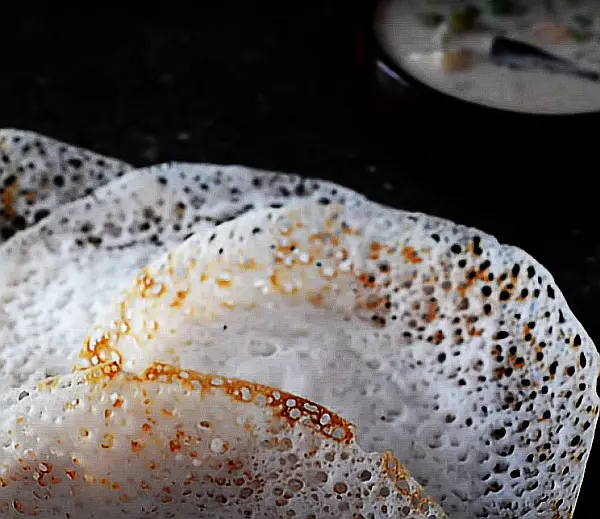Home > Flavours > Appam with Stew
Appam with Stew
Kerala's Beloved Breakfast Delight

Appam with stew is a quintessential dish from Kerala, India, celebrated for its delicate flavors and unique textures. This combination features appam—a soft, bowl-shaped rice pancake with a lacy, crisp edge—and a rich stew, typically made with vegetables or meat simmered in coconut milk. Together, they offer a harmonious blend of subtle sweetness and aromatic spices, making them a staple in Kerala's culinary tradition.
The Origins of Appam
Appam's history is deeply rooted in Kerala's cultural tapestry. Traditionally, the batter for appam is made from fermented rice and coconut milk, lending it a distinctive flavor and airy texture. The fermentation process was historically achieved using toddy, a natural palm wine, though modern recipes often utilize yeast for convenience. The unique bowl-like shape of appam is achieved using a special pan called an "appachatti," which ensures the center remains soft and spongy while the edges turn thin and crispy.
The Accompanying Stew
The stew, known locally as "Ishtu," is a mild yet flavorful curry that complements the subtle taste of appam. Prepared with a medley of vegetables like potatoes, carrots, and green peas, or meats such as chicken or mutton, the stew is gently cooked in coconut milk infused with spices like cinnamon, cloves, and cardamom. The addition of fresh ginger, green chilies, and curry leaves enhances its aromatic profile, resulting in a creamy and comforting dish.
Cultural Significance
In Kerala, appam with stew is more than just a meal; it's a symbol of hospitality and tradition. Often served during festive occasions, family gatherings, and Sunday breakfasts, this dish reflects the region's rich culinary heritage. The combination of appam and stew is particularly popular among the Syrian Christian community in Kerala, where it's a staple during celebrations and special events.
Modern Variations and Global Appeal
While the traditional appam and stew remain beloved, contemporary adaptations have emerged to cater to diverse palates. Vegetarians can enjoy versions of the stew made exclusively with vegetables, while health-conscious individuals might opt for appams made with brown rice or millets. Beyond Kerala, this dish has gained popularity in other parts of India and internationally, often featured in South Indian restaurants worldwide. Its unique combination of flavors and textures continues to captivate food enthusiasts globally.
Experiencing Appam with Stew
For travelers visiting Kerala, indulging in appam with stew is a must. Many local eateries and homestays offer this dish, providing an authentic taste of Kerala's culinary artistry. The experience of tearing a piece of the soft appam and dipping it into the fragrant stew is both satisfying and memorable, offering a true sense of the region's flavors and traditions.
In conclusion, appam with stew is a delightful representation of Kerala's rich culinary heritage. Its harmonious blend of textures and flavors, coupled with its cultural significance, makes it a dish that resonates with both locals and travelers alike. Whether enjoyed in a traditional setting or a modern adaptation, appam with stew offers a taste of Kerala's heart and soul.
